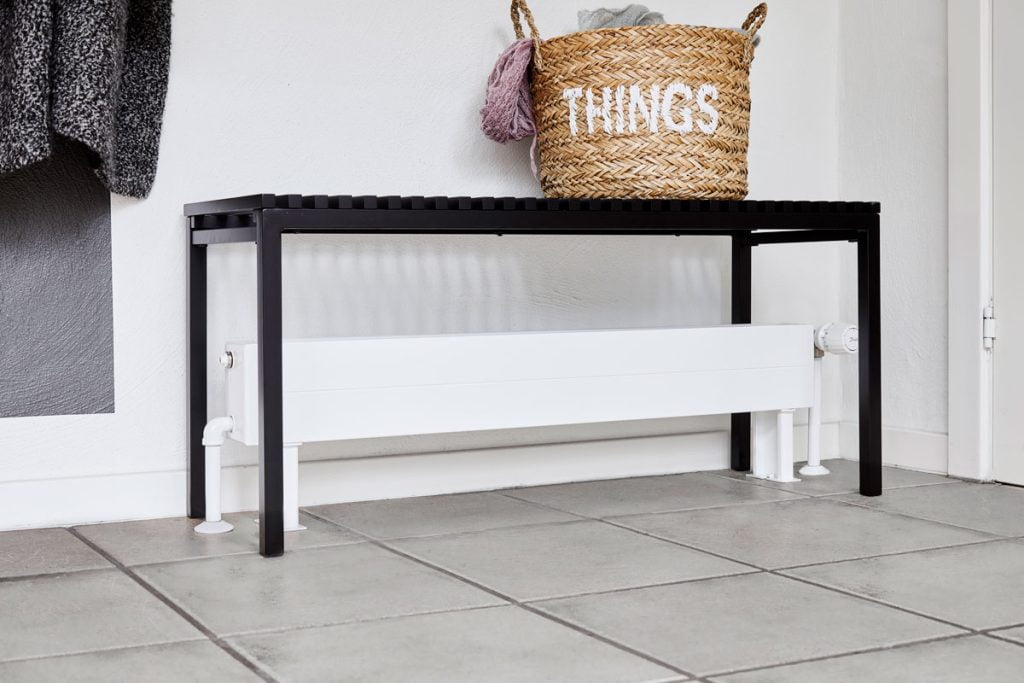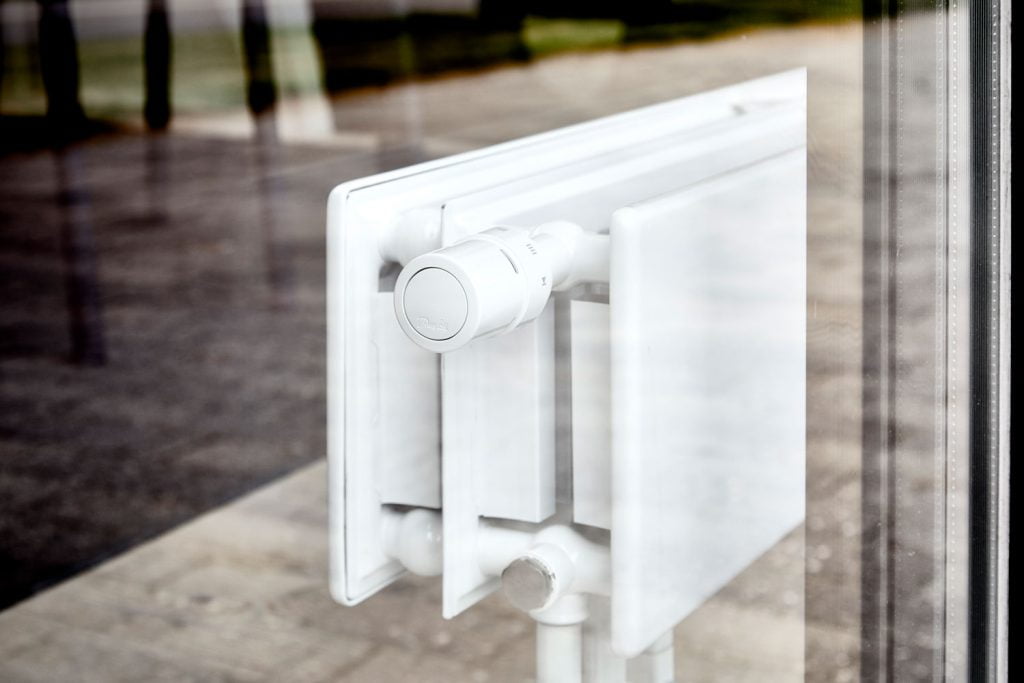Are you worried about how expensive your heating bill will be this winter? And are you considering whether you need to turn down your radiators more than you find comfortable? Then here are five excellent tips on how you can make your radiators more efficient and thereby save on the heating bill - without freezing!

If you hear small clucking and clicking noises from your radiators, or find that they are cold at the top, it may very well be because there is air trapped in the radiators. This does not mean there is anything wrong with them or your heating system, but your radiators are not as efficient as they could be. The water cannot circulate properly, which means that they do not heat sufficiently. You should therefore ventilate your radiators.
Here's how you do it:
It is only natural that thermostats and radiator valves become worn and need to be replaced. If your thermostats are 30 years or older, you should replace both the radiator valve and the thermostat. If your thermostats are 15-30 years old, you can just replace the thermostat itself. Newer models are far more efficient and precise and therefore make better use of the heat. You can save up to 23 percent on your heating consumption by replacing old thermostats with new ones.
Instead of lowering the temperature on the thermostat, you can try lowering the flow temperature in the heating system. It may sound illogical that colder water in the radiators produces more heat, but it can make the radiators more efficient. The cooling of the radiator is not as great as when you send hot water through, and therefore the radiator heats more evenly and efficiently at a slightly lower flow temperature.
But everything depends on the temperature outside. So here is the rule of thumb for the optimal flow temperature depending on the season:
Autumn: When the night frost gradually takes hold and the heating system needs to be switched on, a flow temperature of 40-55 degrees is optimal.
Hard winter: When there are freezing temperatures both day and night, a supply temperature of approximately 60 degrees will be necessary.
Early spring: When there is again only frost at night, set the supply temperature down to 40-55 degrees.
Warm spring: The night frost is over, and you can now settle for 35-45 degrees in flow temperature.
How low you can go on the flow temperature is also depended on the heating system you have.
It is always better to turn on all the radiators in a room just a little bit, than having just one radiator in the room do all the work. By distributing the heat to all radiators in the room, the heat is used much better, and it is cheaper in the end.
If you have rooms in your home where you would like to have a slightly lower temperature - e.g. in the bedroom, then make sure to close the door to the room. Otherwise, radiators in adjacent rooms will use extra energy to heat the bedroom.
In general, you should avoid having more than a five degree difference between the temperatures in the different rooms in your home, as this increases the risk of condensation, which can lead to mold.
Is your sofa right up against the radiator, or if towels and tea towels consistently covering you radiator? Then it's time to do a bit of redecoration.
A radiator needs have plenty of space to release heat into the room. Furniture and textiles absorb the heat, and when you cover them up, you don’t get enough heat output from your radiators. So, create space around your radiators so that the heat can circulate efficiently, and you thereby get the most out of the money you pay for your heating.
In addition to checking your radiators, you can also benefit from the below heating tips:

When the sun comes out, open your blinds and curtains, and let the sunshine in! The sunlight through your windows can give you a lot of free heat the old-fashioned way. And when your house is heated by the sun, your radiators don't need to be turned on at all – it's pure Win/Win. When it gets dark outside and the sun has gone down, you can advantageously draw the blinds and curtains again, as this will help you keep in the heat and the cold air out.
When it gets cooler outside, most people like to snuggle up a bit - and the transitional months of spring and autumn are the perfect time to get out the woolen sweater and warm socks and snuggle up on the sofa with a cup of hot tea, coffee, or cocoa. If you can wait to turn on or turn up the heat, there is money to be saved.
By the way here are a few tips on the settings of Danfoss radiator thermostat:
*Star means frost protection and maintains a fixed temperature of 7 degrees, so you avoid frost damage and bursting of the pipes
When your thermostat is set to 1, a temperature of 13 degrees is maintained
When your thermostat is set to 2, a temperature of 17 degrees is maintained
When your thermostat is set to 3, a temperature of 20 degrees is maintained
Each dot next to "3" indicates 1 degree. So, the dot just after "3" is therefore 21 degrees etc.
When your thermostat is set to 4, a temperature of 23 degrees is maintained and finally -
When your thermostat is set to 5, a temperature of 26 degrees is maintained
On a chilly day, there is nothing that warms the stomach and the soul like a good home-cooked meal or a bit of home baking. You can heat up the kitchen and the surrounding rooms by using the oven. Yes, you use electricity, but you must cook anyway, so why not use the heat from the oven in the meantime. Leave the oven door open after use (watch out for the smaller residents of the house!) and release the heat into the room. In this way, your radiator don’t need to turn on during and after you have cooked - and you use the heat twice!





